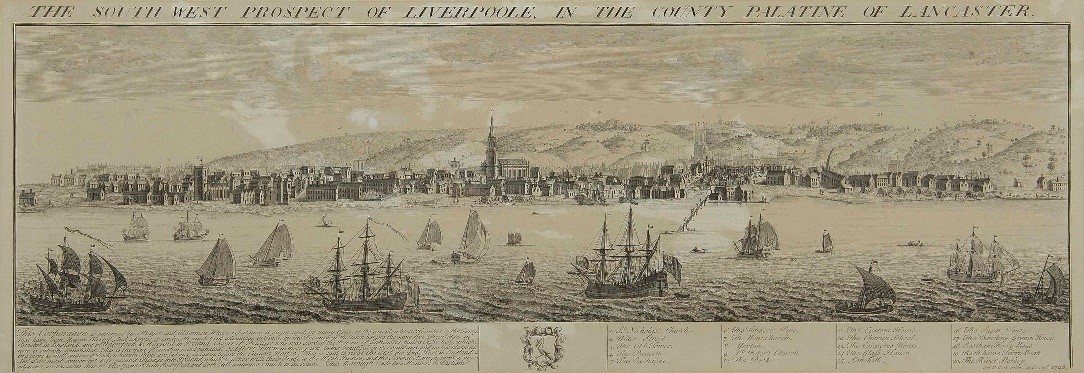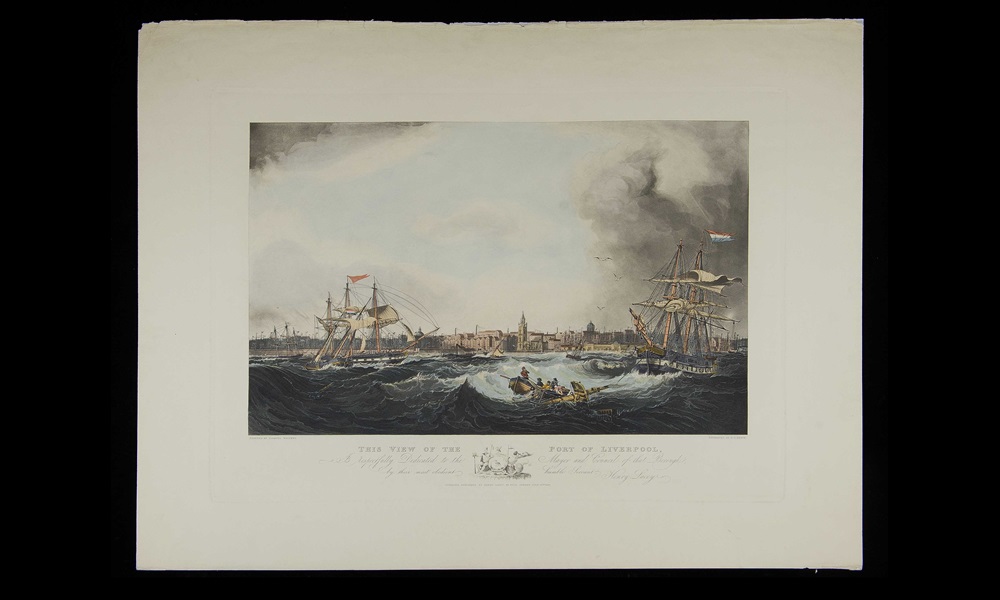Although London and Bristol were initially Britain’s key slave trading ports, by 1740 Liverpool began to dominate in this area. These prints are from 1728 and 1836 and show the development of Liverpool’s docks. Between 1695 and 1807 there were 5,300 voyages from Liverpool to Africa. This compares to 3,100 from London and 2,200 from Bristol in the same period.
But it wasn’t just the docks that saw investment from the wealth generated from these voyages. Involvement in slavery and the slave trade gave those involved wealth and status in society, and this wealth was often invested into their local area. These people, often merchants, could be customers of the Bank of England, as it was a private company before 1946, which gave them access to bank accounts and to credit services.
The Liverpool and Manchester Railway is an example of such investment. Its creation sped up the process of getting cotton from the docks in Liverpool to the mills in Manchester and then getting the finished textiles back to Liverpool to be shipped all over the world.
These industrial links sometimes involved people very close to the Bank of England. Take for example Samuel Hibbert. Hibbert was Director of the Bank of England five times between 1820 and 1833. He was also Director and Chair of the West India Dock Company, and oversaw the expansion of the docklands in London that supported Britain’s involvement in international trade and increased capacity for slave-produced goods to be imported into London.
Historically, the Hibbert family manufactured cotton goods in Manchester, shipping them to West Africa as part of the triangular trade. In Jamaica, the Hibberts bought enslaved people from arriving ships and sold them on to plantations. They also owned and ran plantations themselves.
The cotton used by the Hibbert family would most likely have arrived at the docks of Liverpool, having been shipped from plantations in the Caribbean and America.



